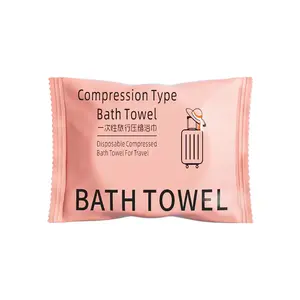Populaire dans votre secteur d’activité






Panneaux muraux intérieur en bois composite, panneaux en plastique moins chers
0,9614 € - 1,81 €
Commande minimale: 2000 mètres






Fabricant professionnel Grain de bois PVC WPC Panneaux muraux pour la décoration
0,6067 € - 1,62 €
Commande minimale: 200 pièces







Contreplaqué laminé mélaminé couleur bois blanc 9mm 12mm 15mm 18mm
4,67 € - 9,34 €
Commande minimale: 10 feuilles







Panneau mural intérieur en WPC Panneau mural en bois composite 3D
0,6067 € - 1,62 €
Commande minimale: 200 pièces







Panneau mural en bois et plastique, décoration laminée cannelée, revêtement en bois, intérieur et intérieur creux, imperméable, lumière Led, 11 pièces
0,4761 € - 1,64 €
Commande minimale: 3 mètres







Ignifuge Imperméable Décor À La Maison Bois Plastique Composite Wpc Panneau Mural Décoratif
0,8401 € - 1,41 €
Commande minimale: 100 mètres
Expédition par pièce: 5,03 €







Colonne de poteau extérieur imperméable de l'usine pour pavillon de clôture de pergola, construction de 10x10cm, tube carré
2,34 € - 3,27 €
Commande minimale: 200 mètres
Expédition par pièce: 17,06 €






Wpc Tubes Façade Panneau De Plafond Garage Wpc Colonne De Tube De Bois
0,7467 € - 1,49 €
Commande minimale: 500 mètres carrés
Expédition par pièce: 275,40 €






Colonne de tube de bois de wpc 80*150 tube de bois de wpc 180*80
1,17 € - 2,20 €
Commande minimale: 300 mètres
Expédition par pièce: 11,13 €






Colle bois laminé vente en gros, bois massif collé, faisceaux et colonnes Glulam exportation.
728,01 € - 830,68 €
Commande minimale: 20 mètres cubes






25X140 Putdoor Co-Extrusion Pavimento Wpc Tuiles de terrasse 3D Wpc Colonne en tube de bois
Prêt à être expédié
3,74 € - 9,34 €
Commande minimale: 10 pièces
Expédition par pièce: 14,35 €




La décoration d'intérieur installent facilement la grille en bois enduite de PVC Tubes carrés de bois de fibre de bois de bambou
2,06 € - 2,53 €
Commande minimale: 100 mètres
Expédition par pièce: 67,58 €
Recherches associées:
chapiteaux en bois colonnescolonnes en bois personnaliséescolonnes en bois spiralecolonnes boiscolonnes carrées en boisintérieur bois colonnes à vendrecolonnes en bois massif ventevieilles colonnes en boiscolonne de piliers en boiscolonnes décoratives en boiscolonnes intérieures en boiscolonnes extérieures en boisintérieur bois colonnes ventecolonnes en boiscolonnes décoratives intérieures






Contreplaqué LVL de bois de noyau de pin de certificat de la CE
282,81 € - 298,67 €
Commande minimale: 20 mètres cubes
Expédition par pièce: 168,01 €






Ndoor Décoration Batten WPC Tube carré creux Colonne cloison en bois Mur de grain de bois Plafond Tube de bois
0,6534 € - 2,06 €
Commande minimale: 10 centimètres
Expédition par pièce: 12,14 €






Construction en bois lamellé-collé H20 poutre en bois pour coffrage construction pour colonne murale coffrage de dalle
2,71 € - 15,69 €
Commande minimale: 400 pièces












Fabricants Colonne Tabouret de bar foncé Barre en cuir Pu blanc 11Mm Film antidérapant Contreplaquers en bois pour Shiplap
280,01 € - 326,67 €
Commande minimale: 20 mètres cubes






Contreplaqué cylindrique flexible imperméable de coffrage de coffrage de film de peuplier pour le formage de béton de colonne ronde
10,97 € - 21,08 €
Commande minimale: 200 pièces






Contreplaqué circulaire de haute qualité pour le visage, 10 pièces, Film à facettes en contreplaqué/colonne
11,77 € - 12,61 €
Commande minimale: 500 pièces
Expédition par pièce: 1,77 €






Motif de grain de bois plafonné Tubes de bois décoratifs d'intérieur WPC Chine Fabricant Tube de bois intérieur
0,7094 € - 0,7467 €
Commande minimale: 500 mètres






Panneaux muraux Extérieur Bonne qualité Wpc Colonne Laminé Tube Chaud Wpc Carré Tube
0,5507 € - 0,8307 €
Commande minimale: 500 mètres
Expédition par pièce: 3 263,43 €






Panneau mural intérieur en bois composite Piliers et colonnes décoratifs Tuiles Piliers Revêtement de pilier
1,14 € - 1,48 €
Commande minimale: 300 mètres
Expédition par pièce: 175,01 €






Panneau mural décoratif en bois composite en plastique wpc intérieur large et étroit couleur chêne mat 16cm * 23mm * 2.9m
0,5881 € - 0,8214 €
Commande minimale: 100 mètres






Nouvelle qualité Construction béton échafaudage échafaudage dalle mur colonne coffrage Support LVL H20 poutre en bois massif poutre en bois W
662,68 €
Commande minimale: 100 centimètres cubes






Plafond d'intérieur suspendu Wpc Viga Beam Colonne de tube de bois 25X50Mm
0,7467 € - 1,49 €
Commande minimale: 500 mètres carrés
Expédition par pièce: 275,40 €






100x100MM 50x100mm wpc poutres WPC colonne de tube de bois
1,17 € - 2,20 €
Commande minimale: 300 mètres
Expédition par pièce: 11,13 €






25X140 Putdoor Co-Extrusion Pavimento Wpc Tuiles de terrasse 3D Wpc Colonne en tube de bois
Prêt à être expédié
3,74 € - 9,34 €
Commande minimale: 10 pièces
Expédition par pièce: 14,35 €






Ndoor Décoration Batten WPC Tube Carré Creux Colonne Cloison en Bois Mur Grain de Bois Plafond Tube de Bois
1,13 € - 2,06 €
Commande minimale: 2000 mètres






Grain de bois pvc wpc panneaux muraux conceptions pour la décoration panneau mural cannelé bois plastique composite wpc flûte
1,13 € - 2,06 €
Commande minimale: 2 centimètres
Expédition par pièce: 23,34 €





Panneau mural en PVC laminé, décoration intérieure, prix de gros
3,07 € - 3,27 €
Commande minimale: 100 mètres
Expédition par pièce: 67,58 €






Jiazhu Haute Qualité Épicéa Pin Collé D77mm Poteau En Bois Pour Tented Camp
606,68 € - 886,68 €
Commande minimale: 20 mètres cubes






Tube de bois composite carré en bois composite WPC pour décoration intérieure
0,8587 € - 0,9147 €
Commande minimale: 500 mètres






Le système circulaire flexible de coffrage de colonne a stratifié le contreplaqué fait face par film cylindrique pour la construction
10,97 € - 21,08 €
Commande minimale: 200 pièces






Bon prix LINYI QUEEN échafaudage Lvl poutres en bois laminé échafaudage planche bois planche bois pour la construction
317,34 €
Commande minimale: 129 centimètres cubes






Panneaux Muraux Extérieur Bonne Qualité Colonne Wpc Tube Laminé Tube Carré Wpc Chaud
0,6161 € - 0,8961 €
Commande minimale: 500 mètres






Vigas De Wpc Colonne De Tube De Bois 25X50Mm Wpc Pour Panneau De Plafond Extérieur Teck
0,7467 € - 1,49 €
Commande minimale: 500 mètres carrés
Expédition par pièce: 275,28 €






Décoration intérieure Batten WPC Tube carré creux colonne cloison en bois Grain de bois plafond Tube en bois
1,13 € - 2,06 €
Commande minimale: 200 mètres






Revêtement intérieur en bois composite Wpc Panneau mural décoratif
1,13 € - 2,06 €
Commande minimale: 2 centimètres
Expédition par pièce: 23,34 €






Fournisseur de bois lamellé-collé Poutres lamellé-collé solives de pont Qualité architecturale
793,34 € - 858,68 €
Commande minimale: 20 mètres cubes
Meilleures catégories
Concernant colonnes en bois stratifié
641 colonnes en bois stratifié sont disponibles sur Alibaba.com. Une large gamme d'options de colonnes en bois stratifié s'offre à vous comme des mur, des décoration et des intérieur. Vous avez également le choix entre un conception graphique, un total solution pour projets et un 3d modèle conception colonnes en bois stratifié, des sur place l'installation, des formation sur place et des livraison de rechange pièces colonnes en bois stratifié et si vous souhaitez des colonnes en bois stratifié moderne, contemporain ou traditionnel.
























